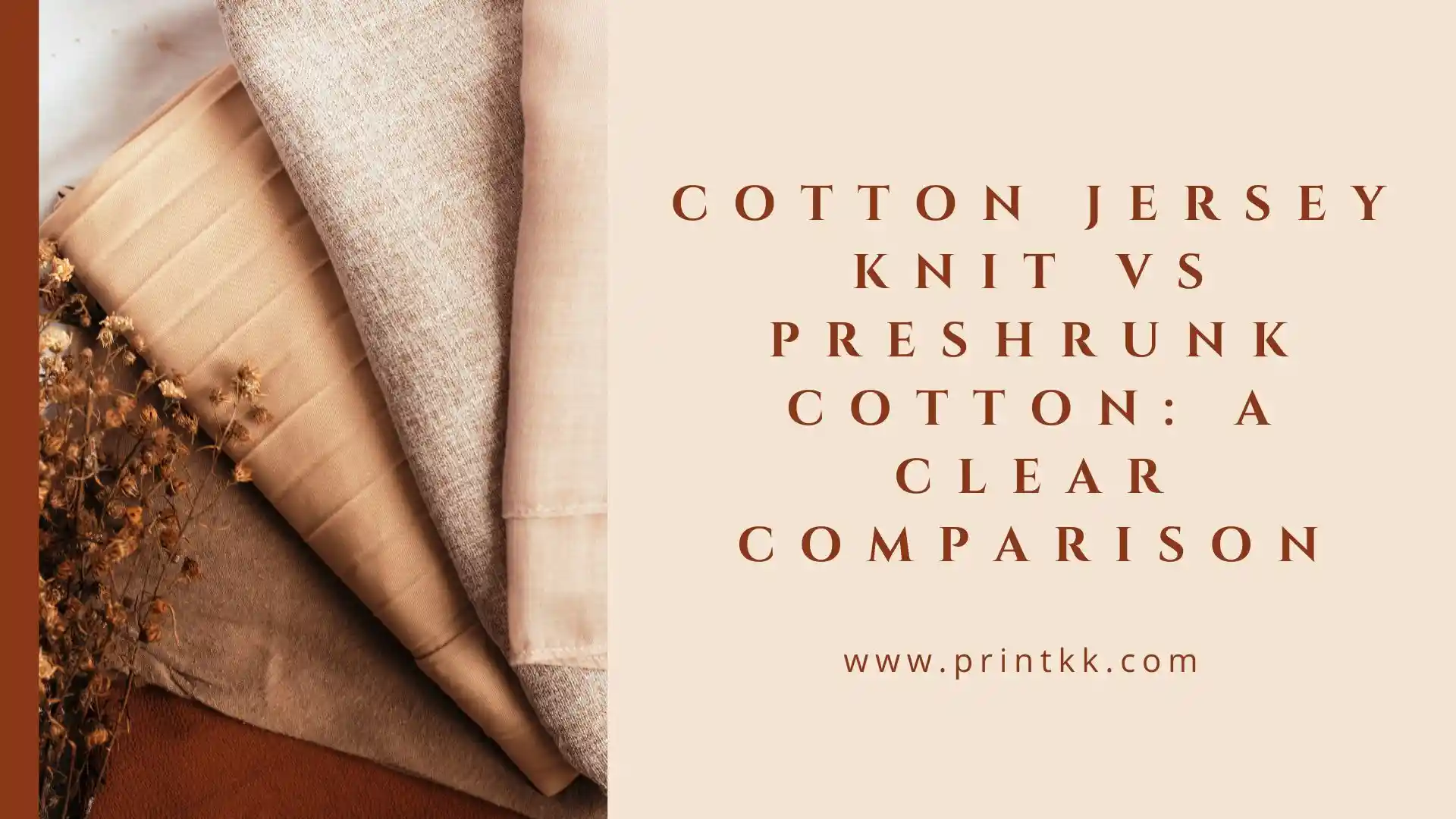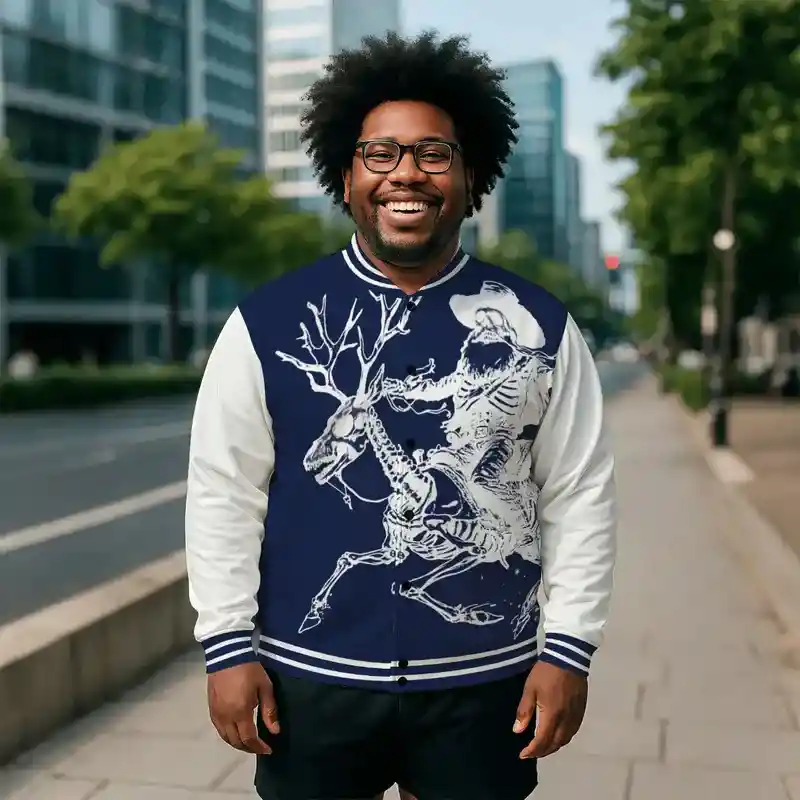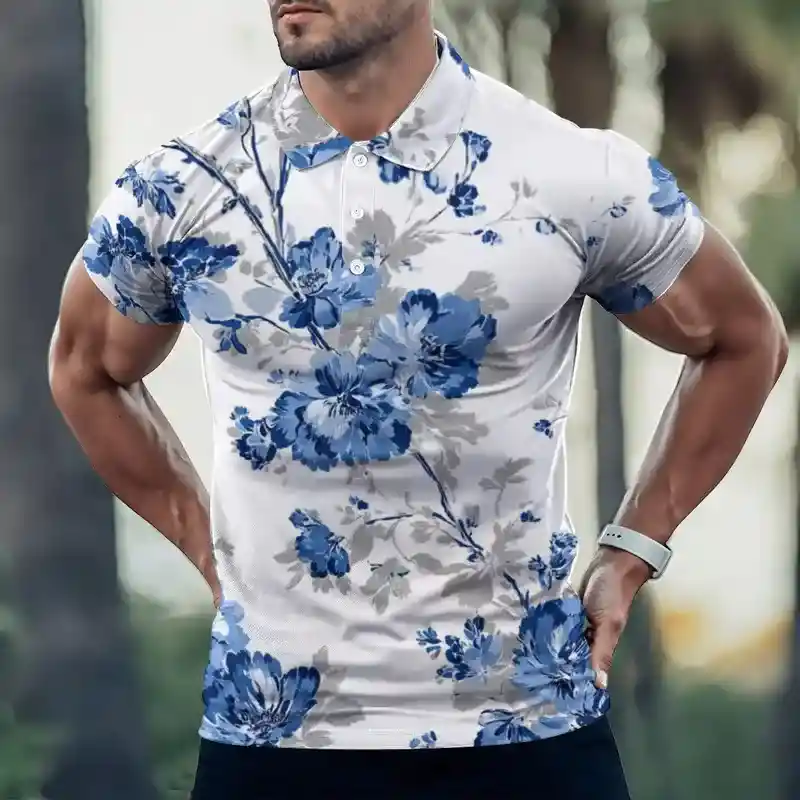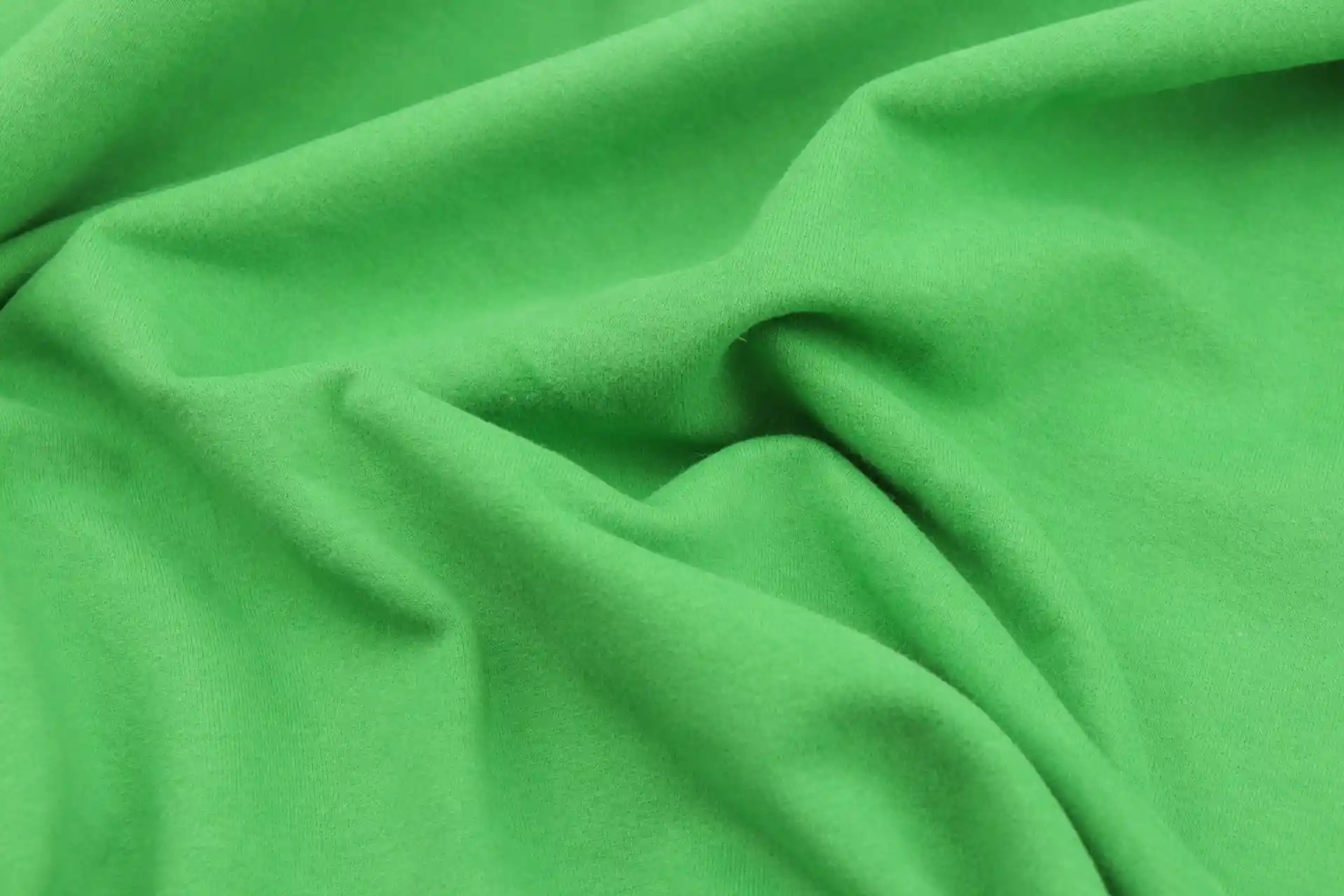
When choosing fabrics for clothing, uniforms, or everyday wear, understanding the differences between materials can save you time and ensure better results.
In this article, we'll explore cotton jersey knit vs preshrunk cotton, breaking down their characteristics, benefits, and ideal uses so you can make an informed decision for your next project.
What is Cotton Jersey Knit
Cotton Jersey Knit is cotton fabric that has been looped into a knit on a knitting machine. Every loop joins with the previous one, making rows that move organically across the fabric.
The face of the fabric is smooth, and the back has little loops, which add some texture.
You will notice it is soft and drapes well, making it comfortable to wear.
This fabric is often used for T-shirts, dresses, and casual wear because it moves with your body and keeps its shape better than woven cotton.
Even though it is made from cotton, the knit structure allows it to stretch sideways, which can affect how it fits after washing.

What is Preshrunk Cotton
Preshrunk cotton is cotton fabric that has been treated during manufacturing to prevent significant shrinking later.
This treatment usually involves washing, steaming, or a combination of mechanical processes that relax and stabilize the fibers before the fabric is cut and sewn.
By doing this, the cotton is less likely to shrink when you wash it at home. The goal is to make the garment maintain its original size and fit more consistently.
You still need to follow care instructions, but preshrunk cotton reduces surprises in fit, making it a practical choice for clothing, uniforms, and bulk orders where sizing matters.
Cotton Jersey Knit vs Preshrunk Cotton
Definition
Cotton Jersey Knit
Cotton Jersey Knit is a soft, lightweight fabric made mostly from cotton. It has a smooth front and slightly textured back, giving it natural stretch.
You can use it for t-shirts, casual wear, or loungewear. The fabric moves with your body, but if it's 100% cotton, it may shrink slightly after washing.
Knowing this helps you choose the right size and plan for care.

Custom Printed on Demand Women's Pajama Pants Customized Services - Women's Clothing - PrintKK
Preshrunk Cotton
Preshrunk Cotton is cotton that has been treated during manufacturing to reduce shrinkage.
Fibers are washed, steamed, or stabilized so garments keep their original size. You can rely on it for consistent fit, whether for uniforms or bulk orders.
While it may feel firmer than jersey, its shape stays predictable wash after wash.
Material Composition
Cotton Jersey Knit
Most cotton jersey knits are 100% cotton, though some include polyester, rayon, or spandex.
Cotton provides softness and breathability, while blends can improve strength, durability, or stretch.
Knowing the material composition helps you predict how the fabric behaves in washing, wear, and movement.
Blends may resist wrinkles or shrink less, but pure cotton feels natural and soft against the skin.
Preshrunk Cotton
Preshrunk cotton can also be pure cotton or a blend. The key difference is that fibers are stabilized during processing to prevent unexpected shrinkage.
This makes garments more reliable in size, especially when producing in bulk.
While preshrunk cotton may feel slightly firmer than jersey, it keeps dimensions consistent and reduces the guesswork in sizing and planning.

Fabric Structure
Cotton Jersey Knit
Jersey knit has a single knit structure with visible loops on the back and a smooth front. This allows horizontal stretch and flexibility, giving garments freedom of movement.
The construction makes it lightweight and breathable, but less firm compared to thicker knits. You can layer it or wear it alone for comfort, though it may lose shape if overstretched.
Preshrunk Cotton
Preshrunk cotton uses standard woven or knit structures, but fibers are pre-relaxed and stabilized.
It stretches less, but the fabric maintains shape better over time. This stability is useful if you need consistent sizing for shirts, uniforms, or bulk orders.
While it may feel less soft initially, preshrunk cotton stays predictable after multiple washes.
Texture and Feel
Cotton Jersey Knit
Cotton jersey is soft, smooth, and naturally flexible. It drapes well over the body and feels gentle against the skin.
Its lightweight texture makes it comfortable for casual clothing and everyday wear.
The fabric stretches easily, especially horizontally, but thin jersey can feel delicate and may show wear over time if washed frequently.

Custom Women's Sleeveless Dress with Pockets - Print on Demand Fulfillment - PrintKK
Preshrunk Cotton
Preshrunk cotton feels firmer and more structured. While it doesn't stretch as much, the texture is stable and consistent.
You can rely on the fit and feel over multiple washes. This makes it practical for garments that need predictable sizing, such as uniforms or products produced in batches, even if it feels less soft than jersey initially.
Shrinkage Behavior and Durability
Cotton Jersey Knit
Cotton jersey can shrink after washing, particularly if it is 100% cotton. Repeated washing may slightly change the fit over time.
Durability depends on fiber quality and how tightly the fabric is knitted. While it is flexible and soft, you should plan for minor changes in size, especially for clothing intended to keep a precise fit.
Preshrunk Cotton
Preshrunk cotton reduces unexpected shrinkage because fibers are stabilized in advance.
You can wash it without worrying about major size changes.
Durability is improved since the fabric maintains structure and resists deformation, making it a reliable choice for garments that require consistent fit over time.
Breathability and Comfort
Cotton Jersey Knit
Jersey knit is highly breathable due to its lightweight knit structure.
Air flows easily through the loops, keeping you cool in warm weather. Its softness and flexibility make it comfortable for everyday use.
It also layers well under jackets or sweaters without adding bulk, which is why it's popular for casual tops and t-shirts.

Print On Demand Button-up Baseball Jacket - PrintKK
Preshrunk Cotton
Preshrunk cotton is breathable but slightly denser than jersey. It provides comfort while keeping its shape and fit over time.
It may feel warmer in hot conditions, but it offers reliable sizing and structure, which is helpful if you need garments that remain consistent and look neat after repeated washing.
Usage in Apparel
Cotton Jersey Knit
Cotton jersey is commonly used for t-shirts, casual dresses, loungewear, and sleepwear. Its stretch and softness make it ideal for clothing that moves with you.
Designers and hobbyists favor it for relaxed fits and draped styles. Because it can shrink slightly, it works best when precise sizing is not critical.

Print on Demand Women's Tennis Skort with Pockets - Women's Clothing - PrintKK
Preshrunk Cotton
Preshrunk cotton is used for t-shirts, uniforms, button-up shirts, and bulk-produced garments.
Its main advantage is consistent sizing, which is essential for workwear or larger orders.
While less flexible than jersey, it keeps garments looking neat and ensures reliable fit even after repeated washing.
Care and Maintenance
Cotton Jersey Knit
Jersey knit needs gentle washing to avoid shrinkage or stretching. Cold water and mild cycles are recommended, and drying on low heat helps preserve shape.
Over time, frequent washing may slightly alter texture or fit, so you need to monitor it if you want garments to last longer and maintain comfort.
Preshrunk Cotton
Preshrunk cotton is easier to maintain. Follow the care label, but it usually keeps its size and shape well.
It tolerates regular washing better than untreated cotton and reduces surprises in fit. This makes it practical for everyday wear, uniforms, or batch production where consistent results matter.
Cost and Availability
Cotton Jersey Knit
Cotton jersey is widely available and generally affordable. Prices vary depending on fiber quality and whether it is pure cotton or a blend.
It's easy to source for small projects, personal clothing, or casual production, making it a versatile option for many applications.
Preshrunk Cotton
Preshrunk cotton can cost slightly more due to the extra treatment during manufacturing.
Availability is good, though certain high-quality blends or bulk pre-shrunk options may be limited depending on suppliers.
The extra cost is often worth it if you value consistent sizing and reduced shrinkage.
Common Types of Knitted Fabrics and Their Features
Cotton Jersey Knit
Cotton Jersey Knit is soft and lightweight. You'll notice it stretches across the width, making it comfortable for t-shirts and casual wear.
The fabric drapes easily and feels smooth on your skin. It's simple to wash but may shrink slightly if not handled carefully.
Cotton Ribbed Knit
Ribbed Knit has raised lines running vertically. You can rely on it for fitted cuffs, collars, and waistbands because it stretches and returns to shape.
It feels thicker than jersey but still soft. You will see it in sweaters and close-fitting tops.
Cotton Interlock Knit
Interlock Knit is tighter and more stable than jersey. Both sides of the fabric look smooth. It's thicker, holds shape better, and feels slightly heavier.
You can use it for polo shirts, dresses, or activewear that needs more structure.

Custom AOP Button Polo Shirts for Men Slim Fit with Print on Demand - PrintKK
French Terry Knit
French Terry Knit has loops on the inside and a smooth surface outside. You will find it cozy yet breathable.
Perfect for sweatshirts, hoodies, and loungewear. It absorbs moisture and keeps you warm without being too heavy.
Lycra Spandex Knit
Lycra Spandex Knit blends cotton with elastic fibers. You get strong stretch and recovery, which is ideal for leggings, sportswear, or fitted tops.
It hugs your body without restricting movement and keeps its shape over time.
Pre-Shrinking Tips for Different Fabrics
Before you start making clothes, it is important to pre-shrink your fabric.
Different materials can shrink or change shape after washing or ironing, which affects the final size and fit of your garment. Pre-shrinking helps the fabric stay stable and reduces the risk of distortion later.
For natural fibers like cotton, linen, silk, and wool, each type needs a slightly different approach:
- Cotton and linen: soak in cool water for 15–30 minutes. Don't wring. Lay it flat to dry until slightly damp, then iron until fully dry.
- Silk: satin and heavy silk should avoid water; steam iron instead. Lighter silks like chiffon can be gently washed and air-dried. Other silk types may need careful steaming without washing.
- Wool: avoid water. Use strong steam and press both sides evenly to prevent distortion.
- Blends with silk, wool, or cotton: high-temperature steaming works, but avoid soaking to keep texture and sheen intact.
For synthetic fabrics, high heat can damage or shrink the material unevenly. Test a small area first.
You can also use a covering cloth when ironing and rely on steam instead of direct contact. Adjust the temperature slightly higher than normal to reduce shrinkage.
Pre-shrinking gives you several benefits:
- Keeps garments from shrinking after the first wash
- Smooths wrinkles and makes cutting easier
- Helps the fabric adapt to humidity, keeping it comfortable to wear

Is Knit Cotton Always 100% Cotton
Not all knit cotton is pure cotton. Knit is just a way of weaving or looping the threads together. You can make knit fabric from cotton, polyester, nylon, rayon, or blends.
The technique itself doesn't tell you the material. For example, some lightweight nylon summer blankets use knit construction to stay soft and breathable.
When you're buying clothing or bedding, it helps to know the real fiber content. Here are a few ways to check if your knit fabric is truly cotton:
- Check the label: Legitimate brands usually list fiber content clearly. "100% cotton" means pure cotton, while something like "50% nylon, 50% polyester" is a blend.
- Look and feel: Cotton knit usually feels soft with a slight fuzz and has a natural shine in sunlight. Synthetic blends often feel smoother or shinier and can be slick to the touch.
- Stretch test: Cotton fibers have very little natural stretch. Knit improves elasticity slightly, but high stretch usually indicates synthetic fibers are included.
By using these tips, you can make sure you're getting the type of knit you want without guessing.
Expert Tips
When you compare cotton jersey knit vs preshrunk cotton, you see clear differences. You get stretch and softness with cotton jersey knit, while preshrunk cotton gives stability and consistent size.
You can choose based on your needs for comfort, fit, and durability.
Paying attention to fabric type and pre-shrinking can save time and effort. By keeping these points in mind, you can work confidently with both fabrics and achieve the results you want.
Read More:
- Does Polyester Shrink? A Clear Guide to Fabric Care
- Cotton Polyester Blend Guide: Pros, Cons, and Uses
FAQs
What are the disadvantages of jersey knit?
Jersey knit can lose shape over time and may wrinkle easily. Thin versions might pill or wear out faster. It also shrinks if not pretreated, so sizing can be unpredictable for some garments.
Does cotton jersey stretch out?
Yes, cotton jersey stretches slightly due to its knit structure. Over time, repeated wearing and washing can make it looser, especially around areas with constant movement like sleeves or waistbands.
Is jersey knit good for summer clothes?
Jersey knit is lightweight and breathable, making it suitable for summer. Its soft texture allows air circulation, keeping you comfortable, while its flexibility ensures ease of movement in warm weather.
How to tell if cotton is preshrunk?
Check the label for fiber treatment information. You can also feel the fabric: preshrunk cotton is more stable, resists significant shrinkage, and maintains consistent shape even after washing several times.










 Global Shipping
Global Shipping


 Made in USA
Made in USA



























